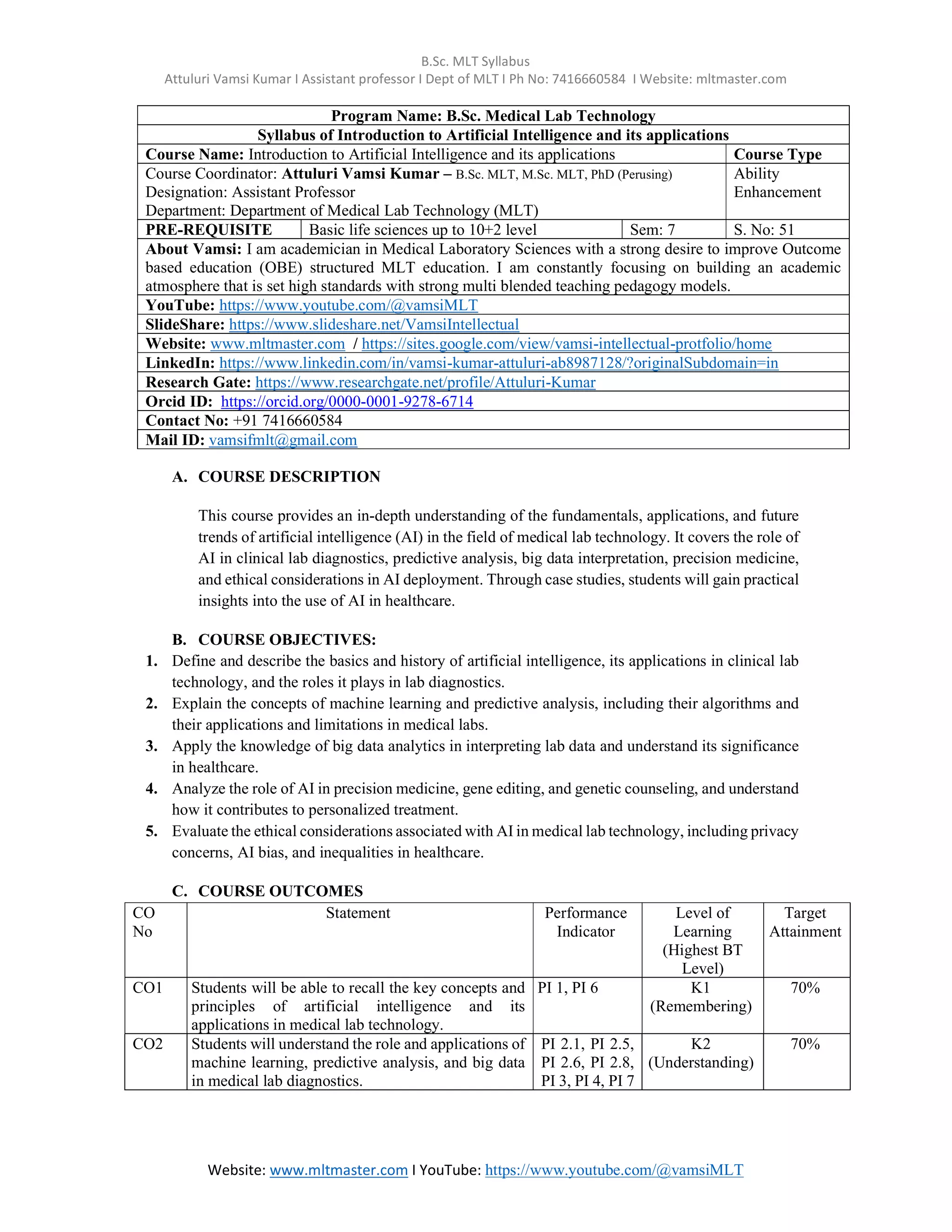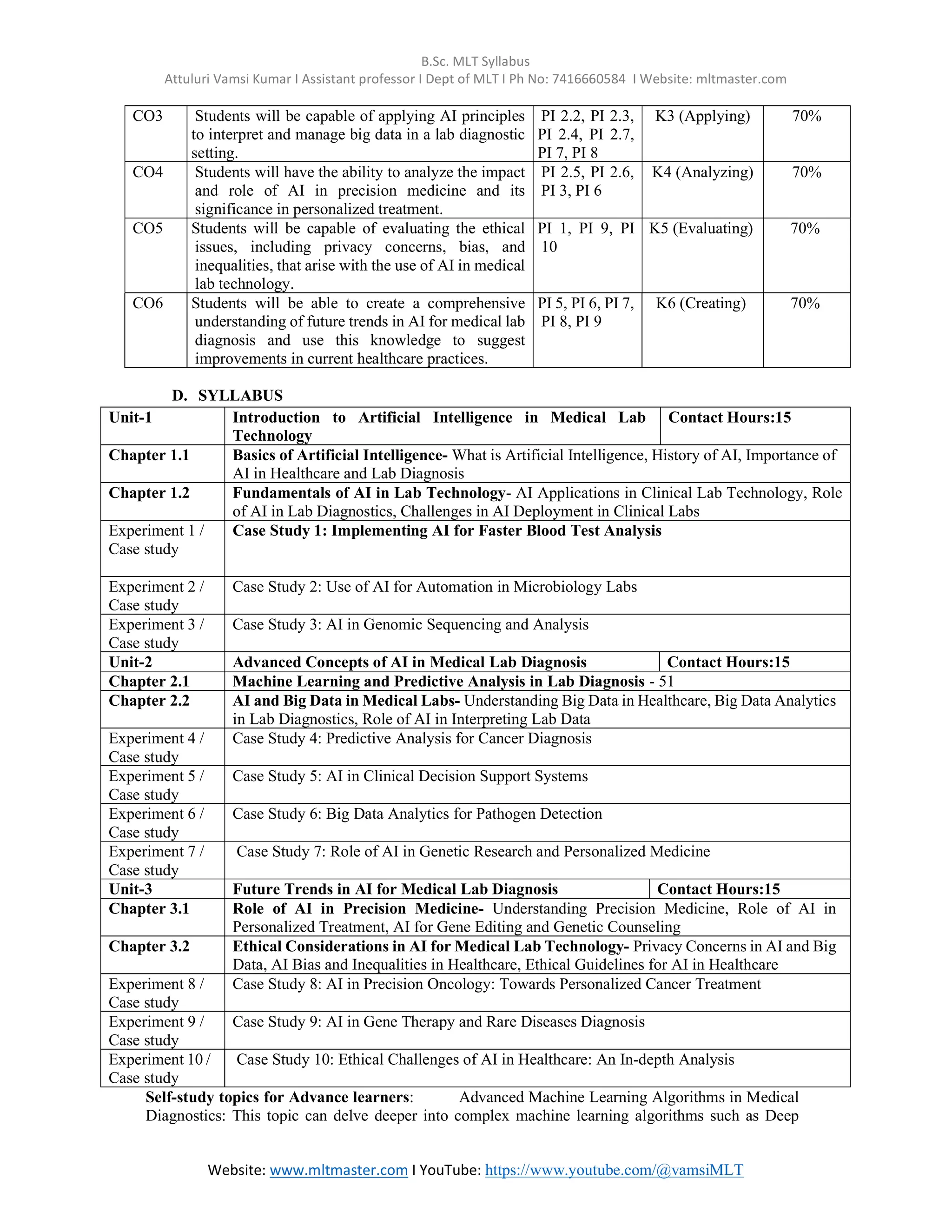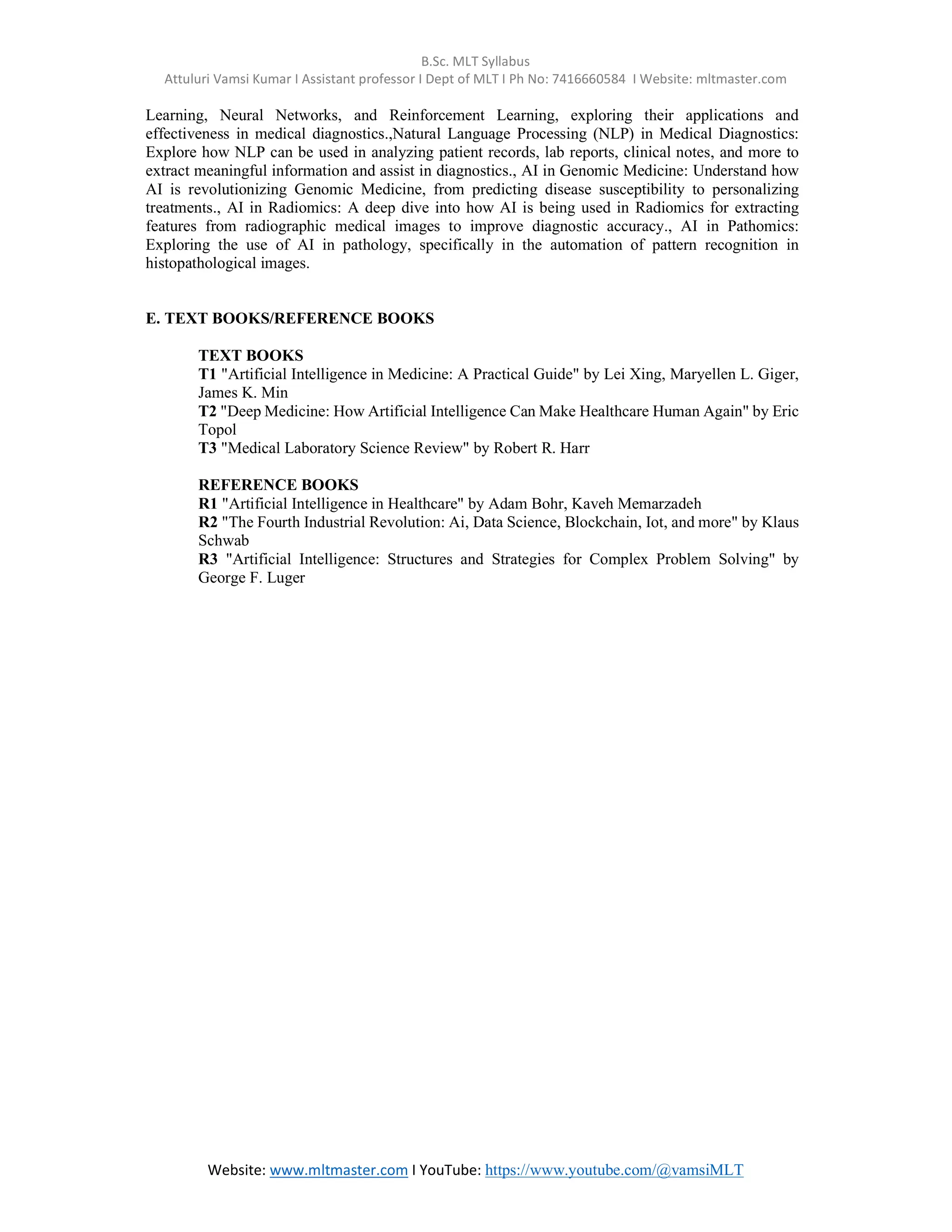The document outlines the syllabus for a B.Sc. in Medical Lab Technology, specifically focusing on a course about artificial intelligence (AI) and its applications in clinical diagnostics. It details the course objectives, outcomes, and structure, covering topics such as machine learning, big data, and ethical considerations of AI in healthcare. The course aims to equip students with knowledge and skills to utilize AI effectively in medical laboratory settings.



